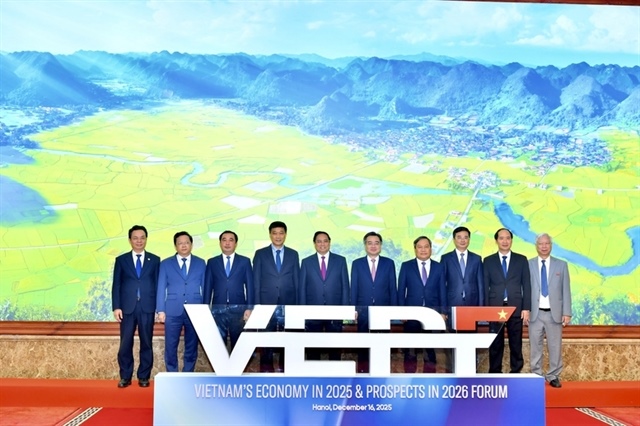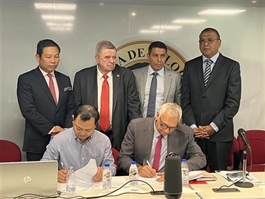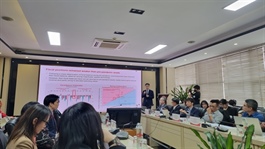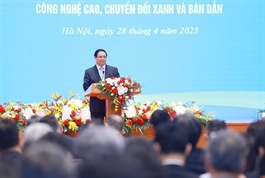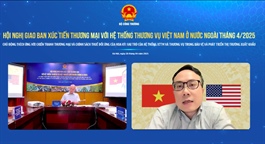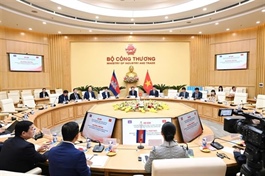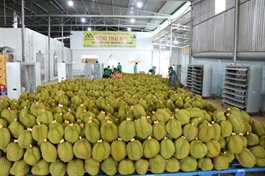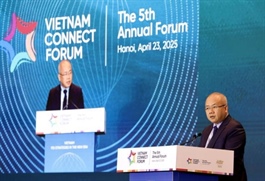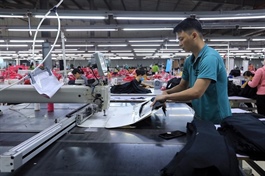Ho Chi Minh City aims for a smarter and greener future
Ho Chi Minh City aims for a smarter and greener future
Ho Chi Minh City’s development vision to 2050 is a strategic integration effort. VIR’s Quynh Chau spoke with Doan Manh Thang, director of Water Technology and Resilience at Royal HaskoningDHV Vietnam, which led a consortium of 10 consultants to set up the city’s master plan.
What sets this plan for Ho Chi Minh City apart from the many previous ones?

Doan Manh Thang, director of Water Technology and Resilience at Royal HaskoningDHV Vietnam |
Ho Chi Minh City has developed nearly 1,000 plans of various scales. However, many of the previous plans were prepared independently by individual departments, leading to overlaps, inconsistencies, and, most critically, unclear implementation funding.
Ho Chi Minh City’s master plan towards 2030, with a vision to 2050, is a comprehensive, integrated strategy led by Ho Chi Minh City People’s Committee and overseen by the city’s planning management board. Throughout its development, the plan received close coordination among departments, districts, research institutions, experts, and scientists.
Strategically, the plan envisions Ho Chi Minh City as a global metropolis, civilised, modern, dynamic, and innovative, with a high-quality workforce. The city aims to lead in a green and digital economy and society, and become a national centre for finance, trade, culture, education, and science and technology.
Accordingly, by 2050, the city is expected to solidify its prominent position in Southeast Asia, with one of the country’s highest economic growth rates and per capita regional GDP, exceeding the middle-income threshold, and offering a high quality of life in a resilient, climate-adaptive urban environment.
To achieve this, clear responsibilities must be delineated between the city and central ministries, with a roadmap outlining key initiatives, their priorities, timelines, funding needs, and policies to engage resources.
One of the key factors in implementing the plan is securing adequate resources. In a context where investment demand is high but public funding and financial capacity are limited, it is essential to set clear priorities and allocate resources accordingly.
A clear list of priority projects has already been established, with public investment acting as a catalyst to initiate and steer private capital flows. When regulatory mechanisms are well-defined, project portfolios are specific, and Ho Chi Minh City is given greater access to public investment capital, it creates a highly favourable environment for attracting private investors.
In reality, many major investors are currently waiting for viable projects and a transparent operational framework to confidently pour capital into Ho Chi Minh City.
What key breakthroughs in this plan will enhance effectiveness?
The first lies in institutional and policy reform. Transforming the growth model, restructuring the economy, enhancing competitiveness, and improving urban governance.
Next is investment mobilisation, particularly for infrastructure, optimising land use, regional integration, economic sector development, and social welfare. The plan also aims to develop integrated industrial-urban-service zones.
Other critical breakthroughs include high-tech development, green transition, digital transformation, high-quality personnel, and nurturing strategic enterprises. Investment will focus on projects that integrate advanced technology, environmental protection, and skilled labour.
It also includes several transformative initiatives that could redefine the city’s development trajectory. These include metro lines, an international financial centre, Can Gio International Transshipment Port, ring roads 3 and 4, the Saigon riverfront corridor, and retail and entertainment zones.
How feasible is capital mobilisation for these ambitious goals?
To achieve double-digit economic growth by 2050 and reach a per capita income of $14,500-15,000, the total estimated investment needed is around $320 billion, with state investment accounting for about 25 per cent.
A viable mechanism to mobilise capital for Ho Chi Minh City’s development in the coming period includes increasing the proportion of central government budget allocation to about 35-40 per cent of the city’s total public investment. These funds should be prioritised for key infrastructure projects.
At the same time, the city’s own budget should focus on accelerating delayed or stalled projects and effectively implementing pilot policies that drive development.
Public investment plays a pivotal role, serving as seed capital to develop essential infrastructure, which in turn facilitates surrounding urban development. In recent years, the government has ramped up transport infrastructure development, opening vast growth opportunities.
However, industrial land remains limited in Ho Chi Minh City, at just around 10,000 hectares. Therefore, the master plan prioritises attracting high-tech and high-value industries that can generate up to $20 to $30 per square metre of industrial land.
To support this, we’ve proposed multiple investment models, including transit-oriented development, build-transfer, build-lease-transfer, and others.
In parallel, the city must effectively implement its capital mobilisation initiatives, encouraging public-private partnerships, private investment, and foreign investment. The city should also utilise land development, urban bond issuance, and non-refundable aid.
What can be done to draw in more private sector participation?
Administrative reform and simplification are key. Digital infrastructure and e-governance must be upgraded to reduce unofficial costs and improve competitiveness. In parallel, the city must continue modernising its physical infrastructure and offer financial support packages and tax incentives, especially in priority sectors.
Public-private-partnerships are also essential to pool resources. The city also needs to boost investment promotion, showcase opportunities, and invest in human capital development to meet evolving business needs.
That said, the biggest barrier remains institutional. Ho Chi Minh City does not lack capital – it lacks mechanisms to channel it effectively. Public investment serves as seed capital to catalyse private investment. Many investors are ready but hesitant due to a lack of clear procedures. If this issue is resolved, Ho Chi Minh City, much like a compressed spring, will unleash rapid and robust development in the coming years.
- 09:00 02/05/2025



